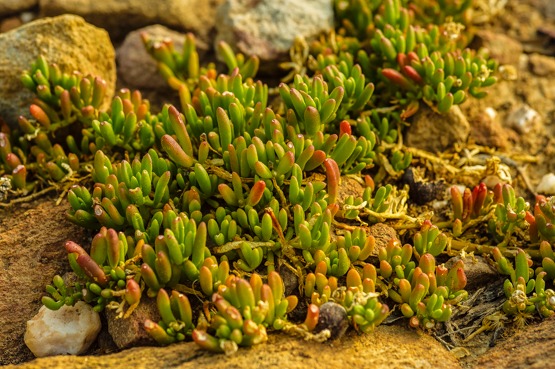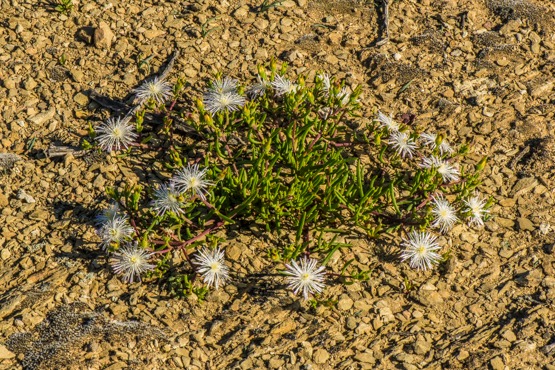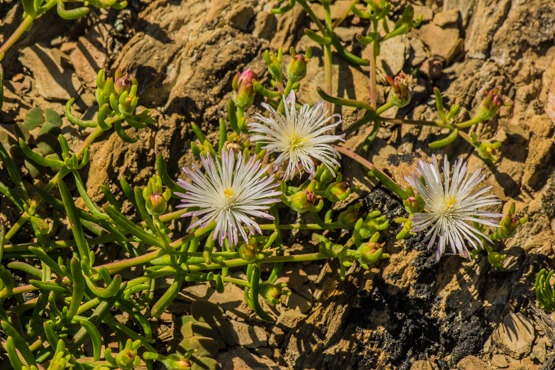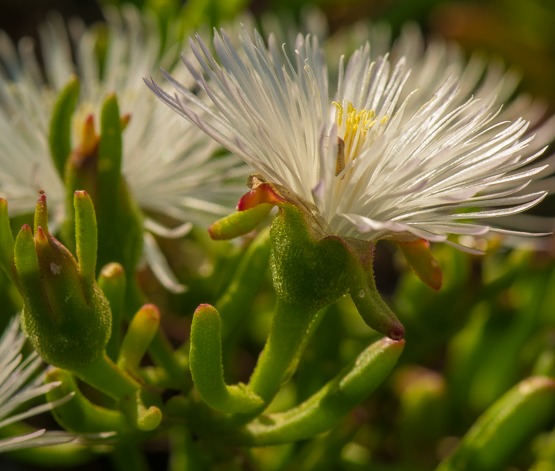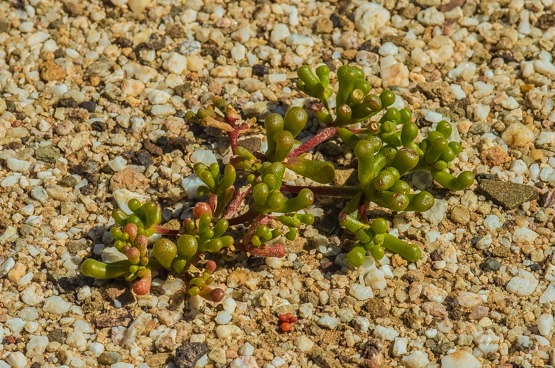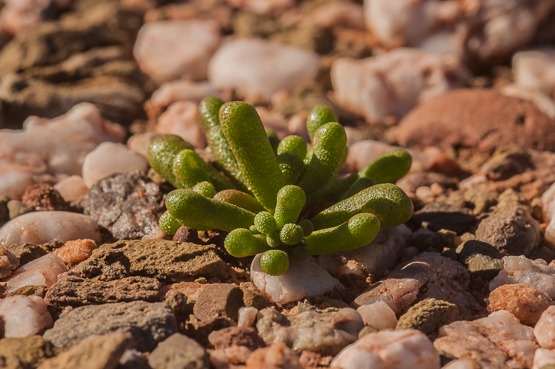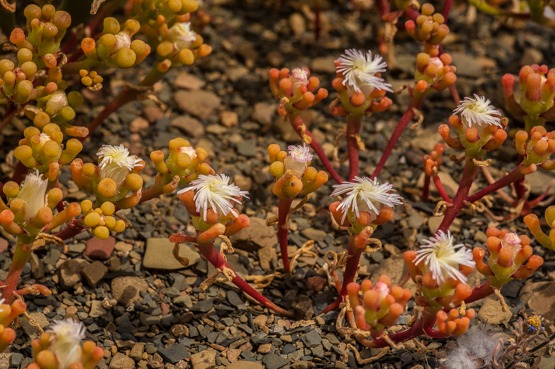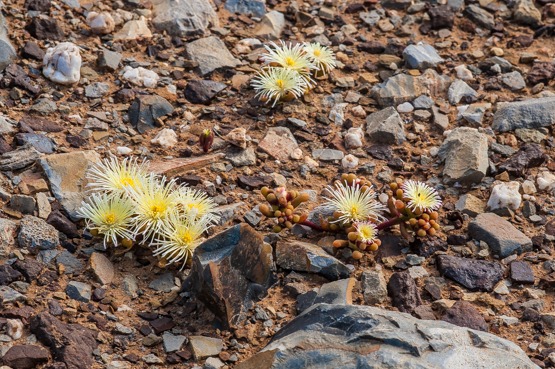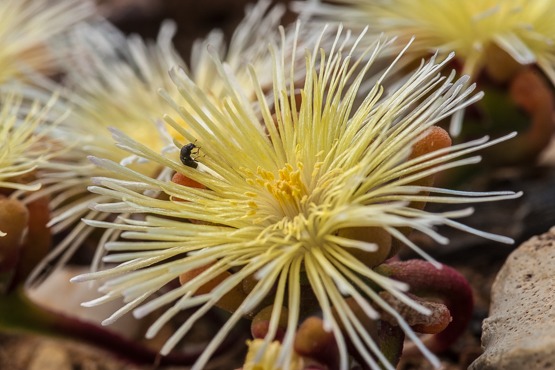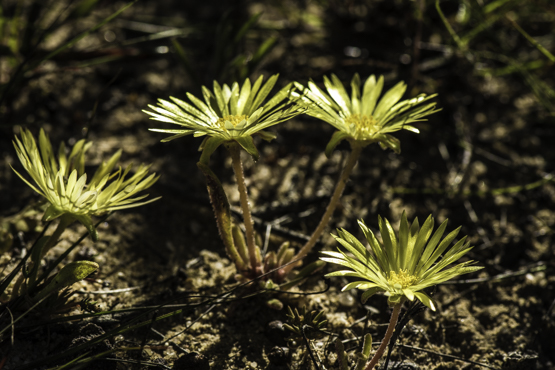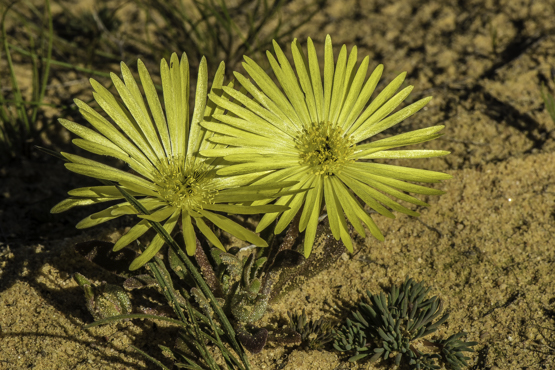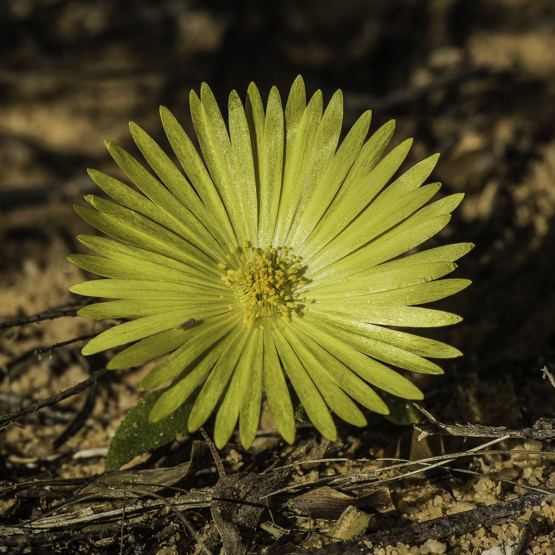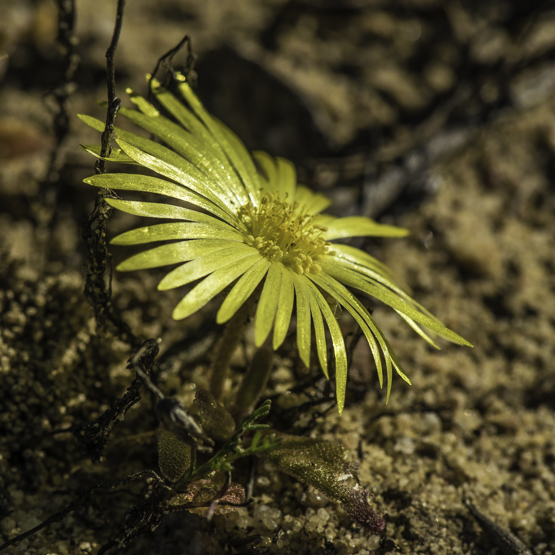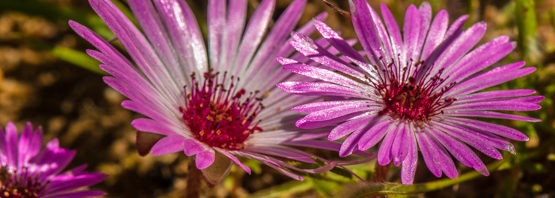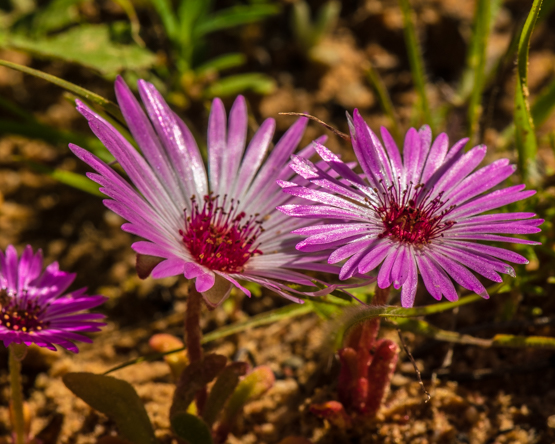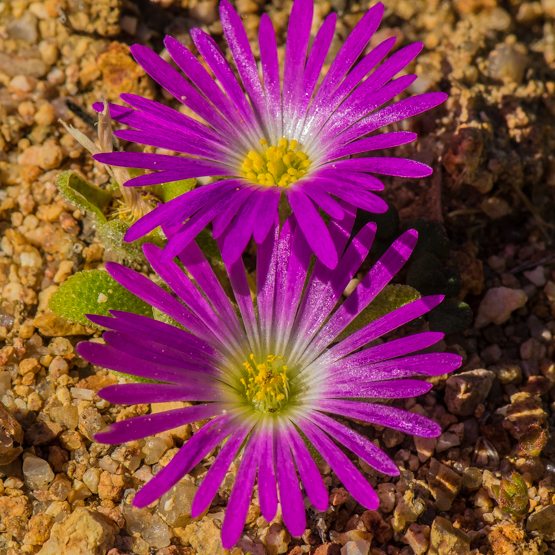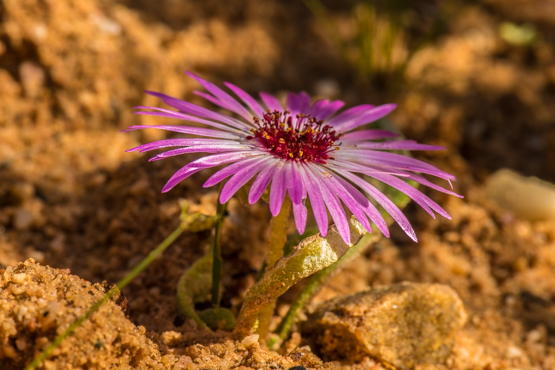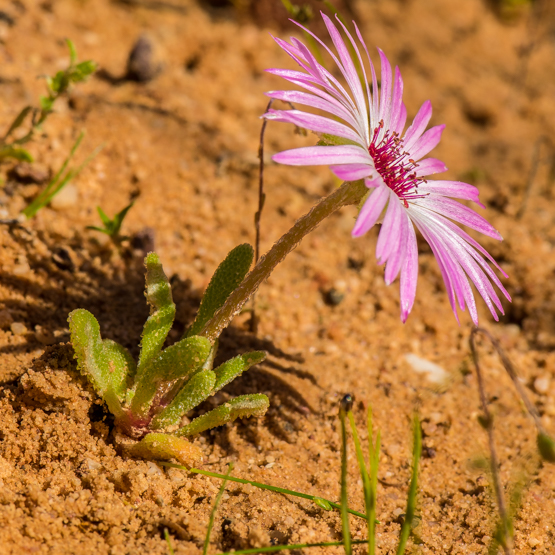Depending on the availability of water, these plants are either annuals or biennials.
They are sprawling or erect (to 40 cm tall), with a slightly woody base. Their leaves usually have inconspicuous bladder cells and are 2-3.5 cm long and 0.2-1 cm wide, linear to narrowly oblong and more or less cylindrical to flattened, slightly channelled and green (often with a red tinge).
The flowers are up to 2.5 cm in diameter and have white petals, often with pink tips and/or a yellowish base; they appear mainly in Sept.-Nov.
Although it is locally abundant and widespread mainly in the Western Cape, the species is reported from places as far away as Springbok and Port Elizabeth. It is usually found on disturbed clay or loam and along roadsides.
